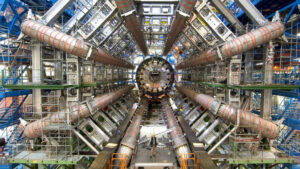As the SARS-CoV-2 cases continue to surge globally, scientists, engineers, and young entrepreneurs are coming with simple yet innovative solutions to fight against the pandemic. Like C-Safekey, Social distancing Device, Affordable N95 masks, etc. Today, I would like to share how as simple as airflow could prevent you from getting COVID-19!
What’s the Physics behind airflow?
In Physics, the air is analogous to a fluid. Just like molecules in water flow from the areas of higher potential (or pressure) to the areas of lower potential (or pressure). The particles in the air, flow from higher pressure to those where the pressure is lower. Similarly, as water in the river can flow smoothly (laminar flow) or roughly (turbulent flow). The airflow can be laminar or turbulent.
Therefore, the formulation of airflow is the same as that of any fluid. It depends upon temperature, pressure, composition, etc.
How it could prevent you from getting COVID-19?
As scientists still debate on the airborne nature of the SARS-CoV-2, we could at least agree that it’s a respiratory disease. Whenever you sneeze or cough, almost 3000 particles are expelled that can travel up to 8 meters! If these droplets contain SARS-CoV-2 it could be transmitted to another person within an 8-meter radius. Depending upon the airflow, these droplets could travel even more! Therefore, maintaining 2-meter social-distancing is not accurate or safe in all conditions or situations.
Also, staying at home or places with poor airflow can increase the odds of getting COVID-19. A majority of coronavirus infections occur at such places when people are in sustained proximity to someone sick. Therefore, to avoid getting in contact with COVID-19 the air needs to be completely replaced with new air from time to time. This could be accomplished through ventilation.
How could you ensure an optimal airflow at your home?
Ventilation could be achieved by mechanical as well as passive (or natural) means. Focusing on natural ventilation is more advisable as it is a more cost-saving and energy-saving solution.
During ventilation, ideally, you have to ensure that the air in your house flows vertically in slow and steady fashion (laminar flow). This principle is already used to prevent the spread of particles in several settings. For instance, clean rooms and hospital operating rooms minimize contamination via sophisticated systems to direct air from the ceiling to the floor with laminar flow. On commercial aircraft, ventilation systems are configured to blow air vertically from ceiling to floor to reduce the spread of contaminated air within the cabin.
Opening windows, doors, particularly on the opposite sides will increase the ventilation of your home. You can also add indoor fans and ventilation fans to increase the effect. Just make sure that the fan is blowing air in the same direction as that of naturally moving air. However, it’s advisable to use electronic appliances occasionally (during non-windy days). As its continuous use will increase your electricity bill.
A word of precaution! Avoid ventilation with outdoor air when outdoor air pollution is high or when it makes your home too cold, hot, or humid.
It’s interesting to see how physics is helping us at various stages; from day-to-day life to high-tech laboratories. All you have to do is literate, educate, observe, and innovate.
REFERENCES
[1] https://science.thewire.in/the-sciences/covid-19-air-conditioning/
[2] https://www.businessinsider.in/science/news/youre-most-likely-to-catch-the-coronavirus-in-a-poorly-ventilated-space-that-makes-offices-very-risky-/articleshow/75584651.cms
[3] https://www.epa.gov/coronavirus/how-can-i-increase-ventilation-home-help-protect-my-family-covid-19
[4] https://www.businessinsider.in/science/news/4-ways-to-know-if-youre-in-a-well-ventilated-space-reducing-the-risk-of-spreading-or-contracting-the-coronavirus/articleshow/76736717.cms





